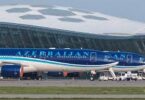Monitoring Desk
BEIJING: China imported more cars in 2017, the China Automobile Dealers Association (CADA) announced on Thursday.
About 1.21 million automobiles were imported, 16.8 percent growth from 2016, the association said.
Some 904,000 cars were bought from dealers, up 0.6 percent, reversing the decline seen in 2015 and 2016.
Parallel imports, vehicles bought from other markets to be sold in China, surged 29.8 percent to 172,000 units. Sports utility vehicles (SUVs) dominated the market, making up 88 percent of the all parallel imports.
Unlike traditional imports, the parallel-import scheme allows local auto dealers to directly purchase vehicles from foreign markets, and the prices of parallel import vehicles, primarily premium brands, are usually 15 percent lower than dealers authorized by auto makers. There were 22,300 new energy vehicles (NEV) imports in 2017, up 38.2 percent.
Liu He, deputy head of the National Development and Reform Commission (NDRC), said at the World Economic Forum in Davos, Switzerland, in January that China would lower tariffs on imported cars as part of its broader efforts to further open up the Chinese market to foreign goods and services, according to the Global Times.
Currently, the tariff on imported vehicle is 25 percent. Cui Shudong, secretary-general of the China Passenger Car Association, acknowledged that the tariff cut would make high-end models more competitive.
“It would cause a limited negative effect on automobile joint ventures in the short term,” Cui said.
Liang Ming, research fellow at the Chinese Academy of International Trade and Economic Cooperation at the Ministry of Commerce, said China would extend imports to balance its foreign trade.
China is shifting toward a consumption-driven economy. “More automobile imports will also help resolve the contradiction between unbalanced and inadequate development and the people’s ever-growing needs for better lives,” Liang said.






